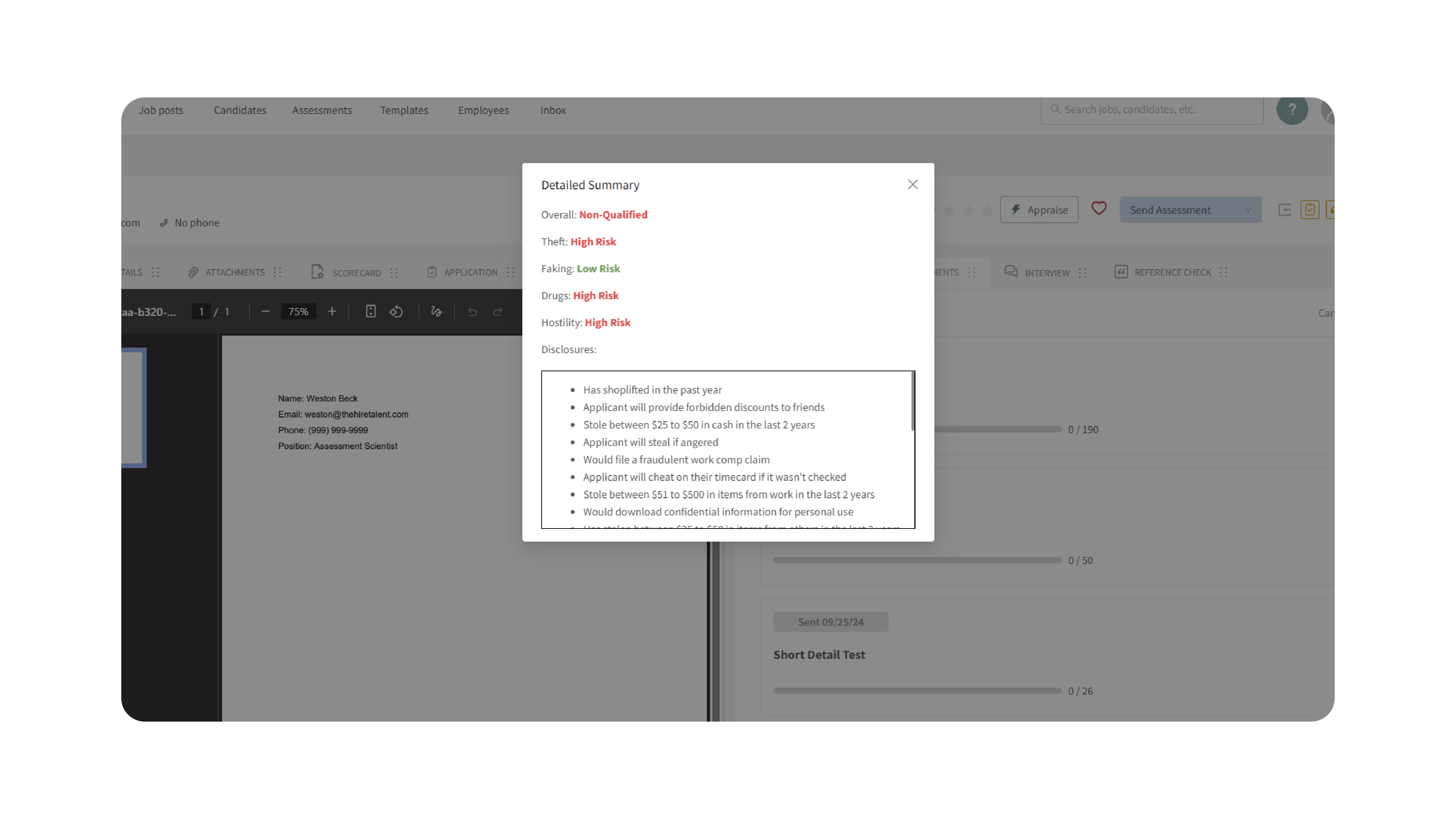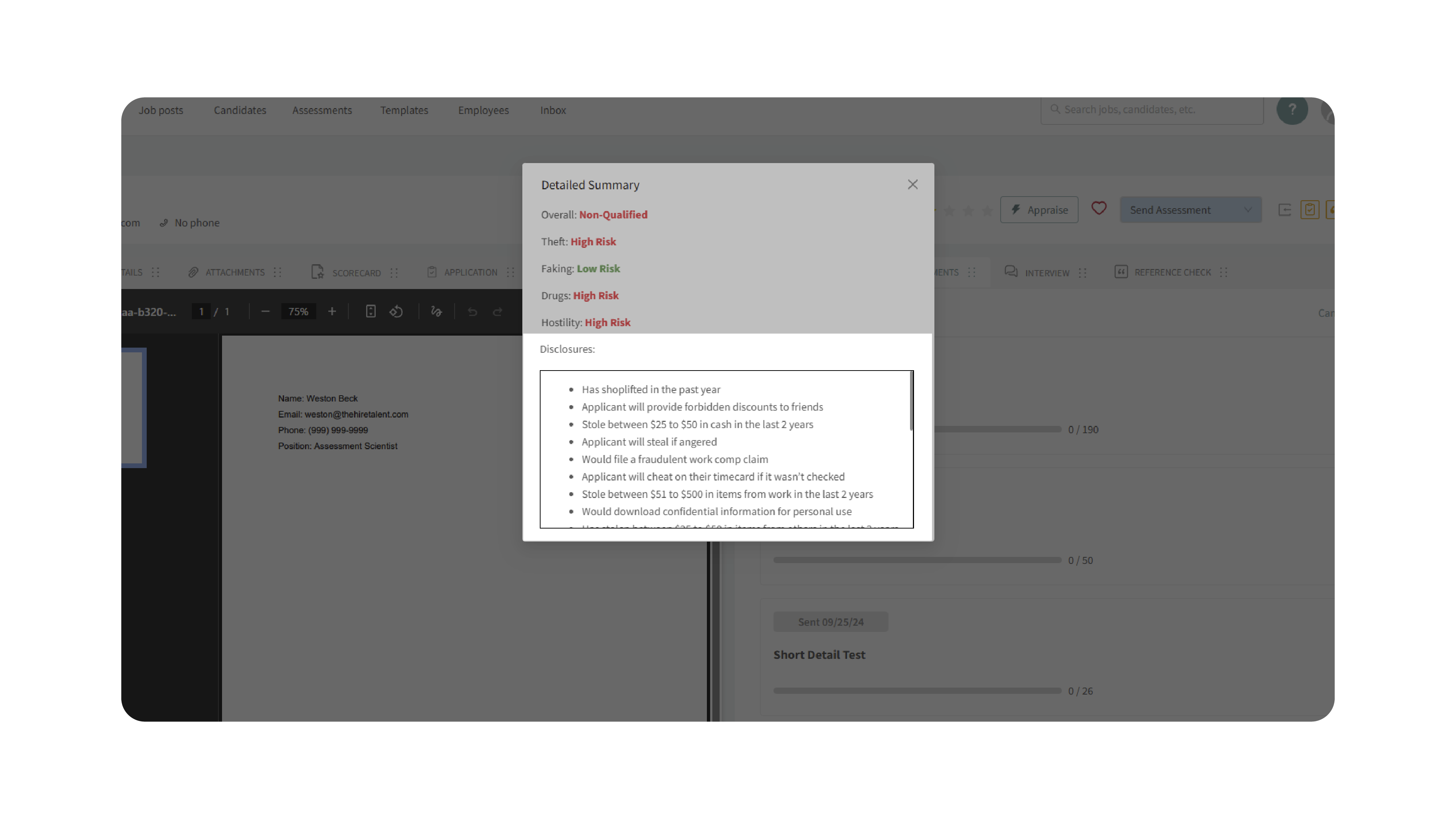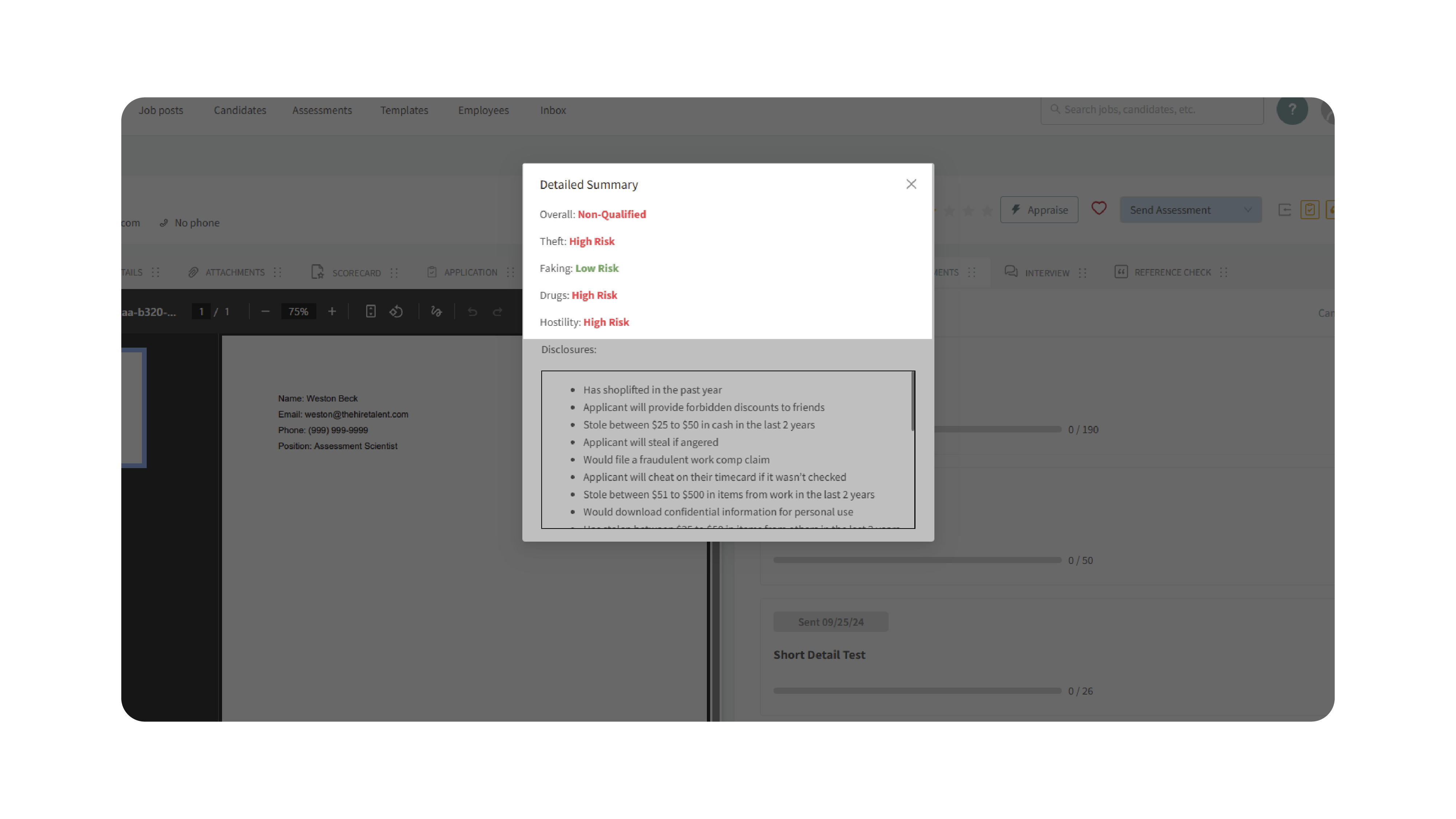IntegrityFirst Assessments
Overview
The IntegrityFirst Assessment is designed to measure key behavioral traits that impact reliability and ethical performance at work. It evaluates four primary areas of concern:
- Theft – Likelihood of engaging in dishonest or unethical behavior regarding company property or resources.
- Faking – Tendency to exaggerate, lie, or present oneself dishonestly in the workplace.
- Drug Use – Admission or normalization of substance use that could affect workplace performance.
- Hostility – Inclination toward verbal or physical aggression in professional settings.
Unlike traditional tests that rely solely on self-awareness or technical ability, the Integrity First Assessment leverages psychological principles—particularly cognitive dissonance—to reveal authentic behavioral patterns. Candidates subconsciously disclose normalized behaviors, allowing employers to identify risk factors that may not appear in an interview.
How It Works IntegrityFirst Assessments:
1. Candidate Completes the Assessment
- Candidates answer a series of questions about workplace conduct and behavior. Their responses indicate patterns of honesty, responsibility, and accountability.
2. System Analyzes Key Behavior Categories
- Responses are automatically scored across four key dimensions:
- Theft – Admissions or justifications for dishonest actions.
- Faking – Patterns of dishonesty, exaggeration, or inability to accept mistakes.
- Drug Use – References to or acceptance of substance use.
- Hostility – Admission or normalization of aggression toward colleagues or clients.

3. Disclosures Are Generated
- The assessment produces disclosures (results summaries) for the relevant categories.
- Notably, no specific disclosure appears for faking, since it is determined through overall inconsistencies and dishonesty across multiple answers rather than individual questions.

4. Evaluate Candidate Results
- Each candidate’s outcome is classified as either:
- Qualified – No significant risk factors detected; candidate may continue in the hiring process.
- Non-Qualified – Behavioral red flags identified; candidate should not advance further.
- Employers can review each result’s summary, including which behavioral categories triggered disclosures.

5. Interpretation Guidelines
- When reviewing assessment results:
- Single isolated admissions (e.g., one-time mistakes) are not cause for automatic disqualification.
- Repeated admissions (e.g., multiple mentions of theft or hostility) indicate normalized behavior and higher risk.
- The assessment algorithm accounts for response patterns, context, and consistency to ensure accuracy.
Why This Matters
IntegrityFirst provides an objective, data-backed approach to screening for honesty, accountability, and workplace safety—traits often difficult to assess in traditional interviews.
This ensures:
- Better prediction of long-term reliability and performance.
- Reduced risk of early turnover due to behavioral issues.
- Safer and more ethical workplace culture.
- Streamlined decision-making with transparent assessment data.
Use Cases
- Recruiters: Quickly identify high-risk candidates before advancing them in the hiring process.
- Hiring Managers: Supplement interviews with behavioral data for more balanced evaluations.
- Organizations: Maintain workplace integrity and prevent misconduct through better pre-employment screening.
Best Practices
- Review all candidate results within context—patterns matter more than single answers.
- Combine Integrity First data with interviews and reference checks for balanced evaluation.
- Use assessment results as part of a structured, fair hiring process rather than a sole decision-maker.
What Happens Next
Once assessments are completed:
- Results are displayed in the Integrity First Assessment dashboard for easy review.
- Hiring teams can access detailed summaries, including any risk disclosures.
- Qualified candidates can progress to the next hiring stage, while non-qualified candidates can be disqualified automatically or manually.
With the Integrity First Assessment, you can confidently make informed, ethical, and consistent hiring decisions—protecting your organization from risk while prioritizing candidates with genuine integrity.
